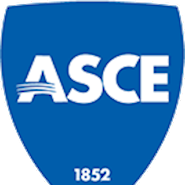ASCE has honored Shirley J. Dyke, Ph.D., A.M.ASCE, with the 2022 George W. Housner Structural Control and Monitoring Medal for groundbreaking research and innovative contributions to develop structural control and monitoring systems, as well as her dedication in the training and professional development of the next generation of engineers.
Dyke was the first to model and apply magnetorheological (MR) fluid dampers for the protection of structures against earthquakes, overcoming the inherent limitations of passive energy dissipation systems, as well as power-dependent active control systems. Her specific contributions over her career include the development of hysteretic models for these devices that capture their salient behaviors when exposed to external stimuli (3222 citations); appropriate nonlinear algorithms to optimally control these nonlinear devices based on readily available feedback measurements, specifically accelerations, which are effective and robust (1880); results comparing several nonlinear control algorithms in terms of efficacy (940); and the first experiments to validate the performance of MR dampers and the associated nonlinear control algorithms she developed (801).
Large-scale demonstrations are an essential step for validation of such systems. Dyke therefore led a 12-person research team to conduct a landmark investigation of MR dampers at large scale (60 percent scale) using real-time hybrid simulation (RTHS) ($1.2 million NSF project). Using the RTMD facility at Lehigh University, her team worked to demonstrate a performance-based design methodology for a structure employing advanced damping devices; conduct the first RTHS on a frame at large scale; validate novel control methodologies for large MR dampers; develop an open-source tool for RTHS (RT-Frame2D); and educate practitioners and students about these technologies. She was invited to deliver two keynote talks on this research in 2013 and 2014. Clearly, Dyke has made important contributions that have directly enabled the development of structural control technology around the world.
Professional engagement can take many forms, and Dyke has demonstrated both leadership and creativity in this regard. Benchmark problem statements that define a model, objectives, and a set of metrics for success serve to provide a means to systematically identify how and when such intelligence will be most effective. They can facilitate transfer of structural control and monitoring technologies to the practicing engineering community. Dyke has been involved in the development of several benchmark problems since the very first problem was released in 1996. She went on to lead a benchmark study considering a full-scale cable-stayed bridge, and similar problems related to both structural health monitoring and RTHS.
The George W. Housner Structural and Monitoring Medal recognizes outstanding research contributions to the broad field of structural control and health monitoring.



